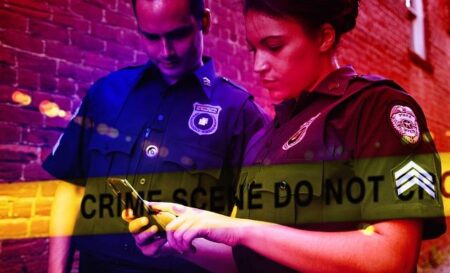Arrest of Mastermind Behind $8 Million Cosmetics Theft Ring Shakes US Retail Sector
Following a comprehensive federal probe, authorities have successfully detained the alleged leader of a sprawling cosmetics theft syndicate responsible for pilfering nearly $8 million worth of luxury beauty products. This criminal network orchestrated a series of well-planned heists targeting upscale retailers across several states over a two-year span. Investigators uncovered that the group exploited weaknesses in supply chains and leveraged insider assistance to carry out their operations, remaining undetected until enhanced surveillance and financial forensics unveiled their scheme.
Highlights from the investigation include:
- Luxury brands targeted encompassed Dior, Lanc√īme, and Bobbi Brown
- At least a dozen individuals have been arrested across eight states linked to the ring
- Recovered merchandise accounts for roughly $4.2 million in retail value, with efforts ongoing to locate remaining stolen goods
- Successful takedown credited to close collaboration between retail security teams and multi-agency law enforcement task forces
| State | Estimated Stolen Value | Number of Arrests |
|---|---|---|
| California | $2.5M | 4 |
| New York | $1.8M | 3 |
| Texas | $1.2M | 2 |
| Florida | $2.5M | 3 |
How the Cosmetics Theft Ring Operated Across Multiple States
The dismantled theft ring functioned as a highly organized enterprise, focusing on the illicit procurement of premium beauty products with a combined estimated value of $8 million. The group capitalized on security loopholes within retail environments and executed their thefts during busy store hours to blend in seamlessly. Their operations were marked by a clear division of labor, involving spotters who scouted locations, professional shoplifters who concealed merchandise, and distributors who managed the resale channels.
Operational methods included:
- Strategic infiltration of stores during peak times to minimize suspicion
- Employing diversion tactics to distract store personnel
- Utilizing custom-designed concealment gear such as modified clothing and specialized bags
- Coordinated logistics ensuring swift movement and distribution of stolen goods across urban and suburban markets
| Role | Primary Duties |
|---|---|
| Spotters | Identify target stores and plan entry/exit strategies |
| Shoplifters | Carry out thefts and conceal products |
| Distributors | Oversee resale and manage supply chains |
Tactics and Obstacles in Fighting Organized Retail Theft
Combating organized retail crime (ORC) presents significant challenges for law enforcement agencies due to its complex, multi-jurisdictional nature. Theft rings often exploit gaps in legal frameworks and jurisdictional boundaries, complicating coordinated responses. Limited manpower and the need for specialized investigative skills further hinder efforts to trace stolen merchandise through intricate resale networks, including online platforms. Nevertheless, joint task forces combining federal, state, and local agencies alongside retail security personnel have demonstrated increased success in disrupting these criminal enterprises.
Effective strategies recently employed include:
- Sharing intelligence between retailers and law enforcement to identify habitual offenders
- Deploying advanced surveillance systems and data analytics to monitor theft trends and logistics
- Conducting undercover operations and sting missions to intercept distribution channels
| Strategy | Objective | Result |
|---|---|---|
| Intelligence Sharing | Identify repeat offenders | Facilitated targeted arrests |
| Surveillance Technology | Track theft activities | Reduced inventory shrinkage |
| Undercover Operations | Disrupt resale networks | Confiscation of stolen merchandise |
Proactive Steps Retailers Can Take to Prevent Large-Scale Shoplifting
Retailers confronting the threat of organized shoplifting rings must implement comprehensive security measures to protect their assets. Cutting-edge surveillance technologies, including high-resolution cameras paired with AI-powered facial recognition, enable real-time detection of suspicious behavior. Equally vital is thorough employee training to help staff identify signs of coordinated theft without compromising customer experience. Building strong partnerships with local law enforcement and participating in retail crime intelligence networks further enhance preparedness by providing timely information on emerging threats and known offenders.
Recommended measures for retailers include:
- Employing RFID tags and electronic article surveillance (EAS) systems to monitor high-value items
- Conducting regular inventory audits supported by data analytics to detect anomalies
- Designing store layouts that reduce blind spots and limit access to vulnerable stock areas
- Implementing strict checkout procedures and bag inspections when necessary
| Measure | Advantage |
|---|---|
| AI Surveillance | Enables early identification of known offenders |
| Employee Training | Enhances rapid response capabilities |
| Inventory Analytics | Detects patterns of shrinkage |
| Law Enforcement Collaboration | Accelerates case resolution |
Final Thoughts on Curbing Organized Retail Crime in the Beauty Industry
The arrest of the suspected leader behind a significant US cosmetics theft ring represents a pivotal moment in the ongoing battle against organized retail crime, which continues to impact the beauty sector profoundly. Authorities remain engaged in uncovering the full extent of the operation and recovering the remaining stolen inventory valued at approximately $8 million. This case underscores the persistent challenges retailers face in inventory protection and highlights the critical role of coordinated law enforcement efforts in dismantling such criminal networks. Further developments are anticipated as legal proceedings advance.







